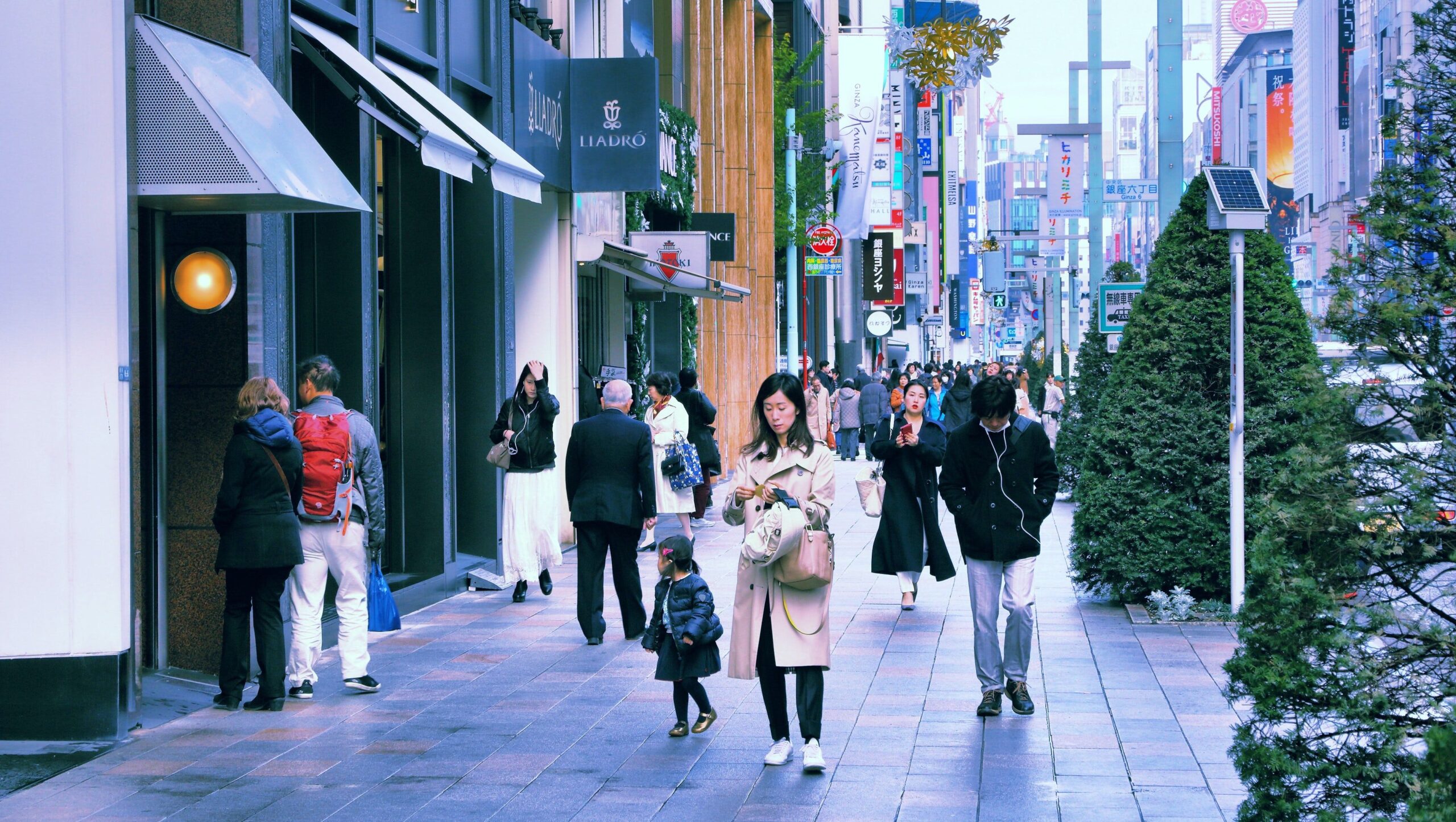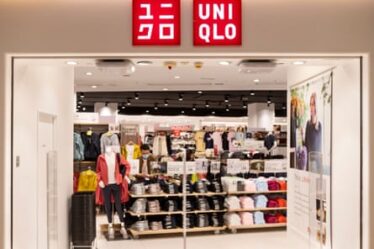
SHANGHAI, China — This week hundreds of millions of Chinese travellers are on the move as the National Day Golden Week holiday causes airports and train stations to swell with passengers on an epic scale. Overshadowing just about everything else happening in the Asian travel market, it is little wonder this story dominates the headlines. But the annual Chinese exodus is not the only travel retail opportunity that fashion brands need to watch.
Tax-refund provider Global Blue recently named Japan its number one tax free shopping market worldwide, in terms of number of transactions and sales-in-store. This success is undoubtedly due to Japan’s increasing popularity as a tourist destination, with tourist numbers increasing 15.6 percent between January and June 2018, compared to the same period last year.
According to Chinese travel booking giant, Ctrip, Japan is the number one destination of choice for Chinese travellers this October holiday, followed by Thailand and Hong Kong.
Both Chinese and Korean shoppers are a well documented source of revenue for fashion brands targeting the well-heeled when they holiday abroad. But the rising consumer classes of Southeast Asia are beginning to make their impact felt across the Asian travel market too.
Data from the Japan National Tourism Organisation (JNTO) shows the biggest rise in visitor numbers to Japan year-on-year for the month of June came from Thailand (up 42.2 percent), Indonesia (46.4 percent) and Vietnam (34.9 percent).
Shoppers from Southeast Asia are often outspending Chinese visitors three-to-one.
Incidentally, these three countries (along with the Philippines) were also recently found to have the highest consumer confidence in the region, according to business intelligence firm Nielson, indicating that the trend for more traveling and spending is unlikely to wane in the short term.
According to Bianca Belnadia, Indonesian managing director of Singapore-based fashion brand Love Bonito, Indonesia’s newly minted middle classes are “crazy” about shopping in Japan because of its convenience, service and reputation for cleanliness and safety.
“Rich [Indonesians] have been going there for decades; only recently it started becoming easily accessible for the upper middle class,” she explains. “For Indonesians, the way of life is kind of shifting. They are now allocating more spending to new lifestyle things, like travel.”
According to Toshi Shimizu, country managing director for Global Blue Japan, though the number of shoppers hailing from Southeast Asian countries is small compared with the number of Chinese visitors to Japan, those who do come are often outspending Chinese visitors three-to-one.
“Vietnam and Thailand, the number of people is still smaller than Chinese and the number of transactions is smaller, but the amount spent per transaction is bigger. Today, the average basket for Chinese people is €400 per person and for Vietnamese it’s €1,200 per transaction,” he says.
In part this is because many of the travellers from Southeast Asia who make their first forays into international travel via convenient locations like Japan are from the top of the socio-economic pyramid. But data also shows that Southeast Asian consumers are travelling in greater numbers, and as positive macro-economic trends work to push more people into the middle class bracket, it’s likely these numbers will continue to rise.
Junichiro Mimaki, director of the “Cool Japan” promotional campaign policy division, a government initiative aimed at strengthening ties between Japan and the rest of the world, outlines aggressive government targets aimed at increasing revenue from this growing pool of visitors.
Rich Indonesians are more likely to splurge in Japan than at home.
According to figures provided by Mimaki, total consumption by foreign tourists currently sits at over $400 million per annum, with the Japanese government setting a target of doubling consumption to $800 million by 2020 and $1.5 billion by 2030.
“We expect that the consumption by foreign tourists will make a large contribution to our domestic market and promote Japan’s retail industry’s change in order to fit demand of foreign tourists more. We also think Southeast Asia will increase their share of Japanese foreign tourists,” he says.
According to research from Kantar, strong macro-economic performance in the region has resulted in what it describes as “spectacular growth of the middle class” in some Asian markets, which means a boom in the number of trips taken: Indonesia will be the fastest growing travel market in the region with its gross bookings increasing by over 50 percent from a small base in 2014 to $17.5 billion by 2017.
Consumer spending in Indonesia reached an all-time high of nearly $98 billion in the first quarter of this year. Retail sales growth has fluctuated widely from month to month, but remains above 2 percent most months and sometimes double that.
“You’ve got the massively youthful populations of the Philippines or Vietnam, where the average age is somewhere in the mid-20s, and a country the size of Indonesia, with its growing urbanisation. In all of the ASEAN (Association of Southeast Asian Nations) countries, everything is swamped by the China story, but urbanisation is happening at a faster rate in Vietnam than it is in China, and no one talks about it,” explains Kevin Martin, head of retail banking and Wealth Asia at HSBC.
In terms of what these consumers are buying when traveling to Japan, the product segment that comes up most often is beauty, with Martin pointing out that, although all categories of tourists from Southeast Asian nations are increasing, there is a marked increase in female business travellers from the region, and both Shimizu and Mimaki naming Japanese beauty brands such as SK-II and Shiseido as major beneficiaries of the trend.
Urbanisation is happening at a faster rate in Vietnam than it is in China, and no one talks about it.
According to Vu Quan Nguyen, creative director at Leo Burnett Vietnam, for Vietnamese tourists to Japan, the array of products and brands on offer that can’t be found at home is a major draw. “At top of mind is apparel and footwear for young men, and apparel, but also a lot of cosmetics for women,” he says.
Japan’s superior service levels – both in terms of retail and hospitality – are a major draw during peak tourist seasons of ‘hanami’ and ‘koyo’ (spring cherry blossoms and autumn foliage period), but Japan’s surprisingly poor average level of English language skills leaves some cosmopolitan travellers from Southeast Asia feeling frustrated. While this is something that Japanese officials are trying to address in the run-up to the 2020 Tokyo Olympics, there is no quick fix.
In terms of luxury products, Belnadia believes rich Indonesians are more likely to splurge in Japan than at home, as they plan ahead for trips to destinations where they will have more choice, and Nguyen points out that Japan has become a major destination for shopping by proxy for limited edition and luxury items that are resold on the grey market in Vietnam.
HSBC research shows households in Southeast Asia remain more price-sensitive, even at equal levels of GDP per head than those in China. So, while “trading up” is a key consumer theme for the middle classes in China, it’s less so for some of their neighbours to the southeast.
“If you look at the traditional Chinese consumers who love the brands and are prepared to pay for them, I suspect [that apart from Singapore] it’s absolutely not the same for the ASEAN countries [considering] their economic pace and status development,” Martin says.
The better assortment of brands and products, as well as relative convenience in terms of transportation, inexpensive flight routes and ease of getting a visa (though visas are generally required for Vietnamese and Indonesian travellers, Japanese visas are more straightforward to obtain than those for US or European destinations and tourists from Thailand qualify for a visa-free travel period) are all part of the appeal of destination for Southeast Asian travellers, but there are also cultural elements at play.
Though Nguyen believes that service and deference afforded consumers in Japan plays into the country’s popularity as a shopping destination, there is also a tangible sense of Asian identity that serves to make Southeast Asian travellers feel somewhat at home, even as they strike out abroad for the first time.
“I think there is this sense of familiarity, this sense of pride and connection to a pan-Asian culture or lifestyle and that’s a way for marketers can take advantage of this pan-Asian identity over a global one in terms of cultural value, there’s definitely something there,” he says.
Related Articles:



